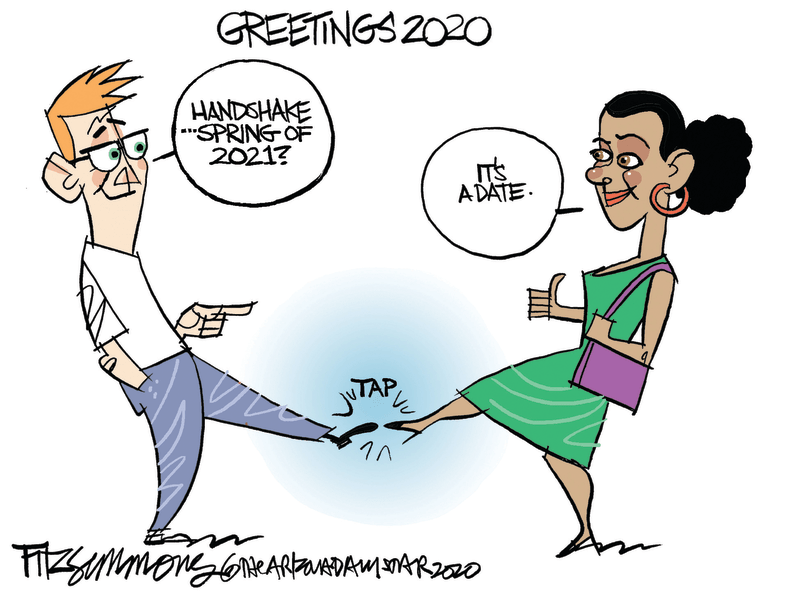It looks like President Trump will continue to blame China for the coronavirus, deflecting criticism for the administration’s late and slipshod reaction to the pandemic. China isn’t blameless, but how much China is blamed is up to the cartoonists.
I’m starting out with three more cartoons from Luojie, our CagleCartoonist from Beijing who draws for The China Daily, China’s state owned, national English language newspaper. Loujie draws the Chinese government’s official point of view, pushing back against the criticism coming from America. Defending China is not a popular point of view with cartoonists around the world and Luojie is likely the only cartoonist seen drawing this point of view in newspapers outside of China.
Don’t miss our earlier collections:
Our newspaper clients are crashing now as Coronavirus is crushing their advertisers. We need your support for Cagle.com (and DarylCagle.com) now more than ever! Notice that we run no advertising! We depend entirely upon the generosity of our readers to sustain Cagle.com. Please visit Cagle.com/heroes and make a contribution. You are much appreciated!





Bart van Leeuwen, The Netherlands



Bas van der Schot, The Netherlands
Please forward this email to your friends – tell them our Cagle.com email newsletters are FREE and FUN! They can join the newsletter list at Cagle.com/subscribe.
Don’t miss my other Coronavirus posts:
The Most Popular Cartoons of the Pandemic
The Most Popular Cartoons of the Week through May 2nd, 2020
Best of the Grim Reaper, Part 1
Best of the Grim Reaper, Part 2
Dr Fauci PART 2
Dr Fauci PART 1
Trump and Disinfectant PART 2
Trump and Disinfectant PART 1
Most popular Cartoons of the Week through 4/26/20, (all coronavirus)
Forgotten Biden – Part 2
Forgotten Biden – Part 1
Most popular Cartoons of the Week through 4/18/20, (all coronavirus)
Blame China! Part Two
Blame China! Part One
Most popular Cartoons of the Week, through 4/11/20 (all coronavirus)
My Favorite NEW Easter Cartoons
The Great Mort Drucker Passes Away
Planet COVID-19, Part 4
Planet COVID-19, Part 3
Planet COVID-19, Part 2
Planet COVID-19, Part 1
The Most Popular Cartoons of the Week, 4/4/20 (all coronavirus)
Toilet Paper Part Two
Toilet Paper Part One
Trump and the Easter Bunny
The Most Popular Cartoons of the Week, 3/29/20 (all coronavirus)
Tsunami Coming
Pandemics Compared
See, Hear Speak No Virus
The Best Coronavirus Sports Cartoons
New Coronavirus Favorites
The Most Popular Coronavirus Cartoons
My Corona Virus Cartoons
Corona Virus Quarantine Blues in China






































































































